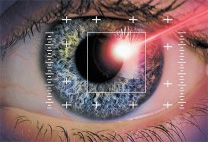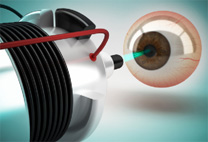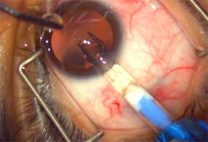
About Lasik
LASIK or Laser vision correction, as it is commonly known stands for Laser Insitu Keratomileusis where a laser is used to reshape your cornea in a manner that you see things clearly without need for glasses or contact lenses. LASIK is a simple procedure that can change your life and the way you see. What it feels like seeing things clearly right from the time you wake up in the morning till you go to sleep without having to hunt for your glasses or contact lenses, is something only one who wears glasses would understand. If granted a wish to anyone wearing glasses, they would definitely choose to get rid of their glasses. LASIK surgery at Mumbai Eye Care would help this dream of yours come true.
LASIK at MEC is just a feather-touch procedure. It is often called as the “flap and zap” procedure. It is a precise, fast, safe and permanent correction for removal of glasses. We perform detailed evaluation for the patients to know their suitability for LASIK.

Wavefront And Topoguided Lasik
At MEC, we understand that each eye is different. It’s not just about correcting your sphere and cylinder number in your glasses, but going beyond to provide you the supervision you deserve. We take into account the corneal shape and corneal aberrations when we perform the customized LASIK. Corneal wavefront measurement projects various aberrations in your eyes, while topography gives us the structural details of your cornea. A correction based on these values will help you achieve not just good visual acuity but enjoy a good quality visual.

Femtosecond Lasik
When it comes to precision in making the flap for LASIK, why compromise and take a chance by going for the blade LASIK? Femtosecond LASIK is used to create a flap that forms a layer of bubbles beneath the outer layer of the cornea with the use of rapid pulses of light. The flap is then lifted and the underlying cornea is reshaped with an excimer laser. Then the flap is replaced in its original position. The femtosecond LASIK is a new technology that has precision up to each micron level - an all laser LASIK procedures. Now with the femtosecond technology, we have highest precision for the flap, least collateral damage, improved patient comfort and ability to allow more customization of the flap.

PRK / Phototherapeutic Keratectomy
It's also known as advanced surface ablation is again a flap free procedure that does not require any flap to be made in the cornea. The procedure gives results as good as LASIK. For all those who have low to moderate myopia and borderline corneal thickness, PRK is the best option.

Implantable Collamer Lens/ICL
The Implantable Collamer Lens (ICL) are implanted in the eye to work with the crystalline (natural) lens to correct spectacle errors. In simple words, ICL is permanently implanting contact lens in your eyes. ICL are the preferred option in following scenarios -
- High Minus or High Plus specs power with or without cylinder numbers.
- In lower powers they are preferred when the cornea is thin and LASIK is not advisable.
FAQ's